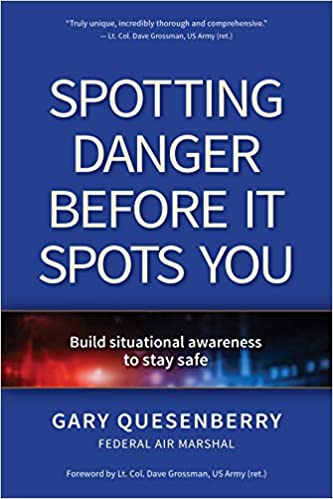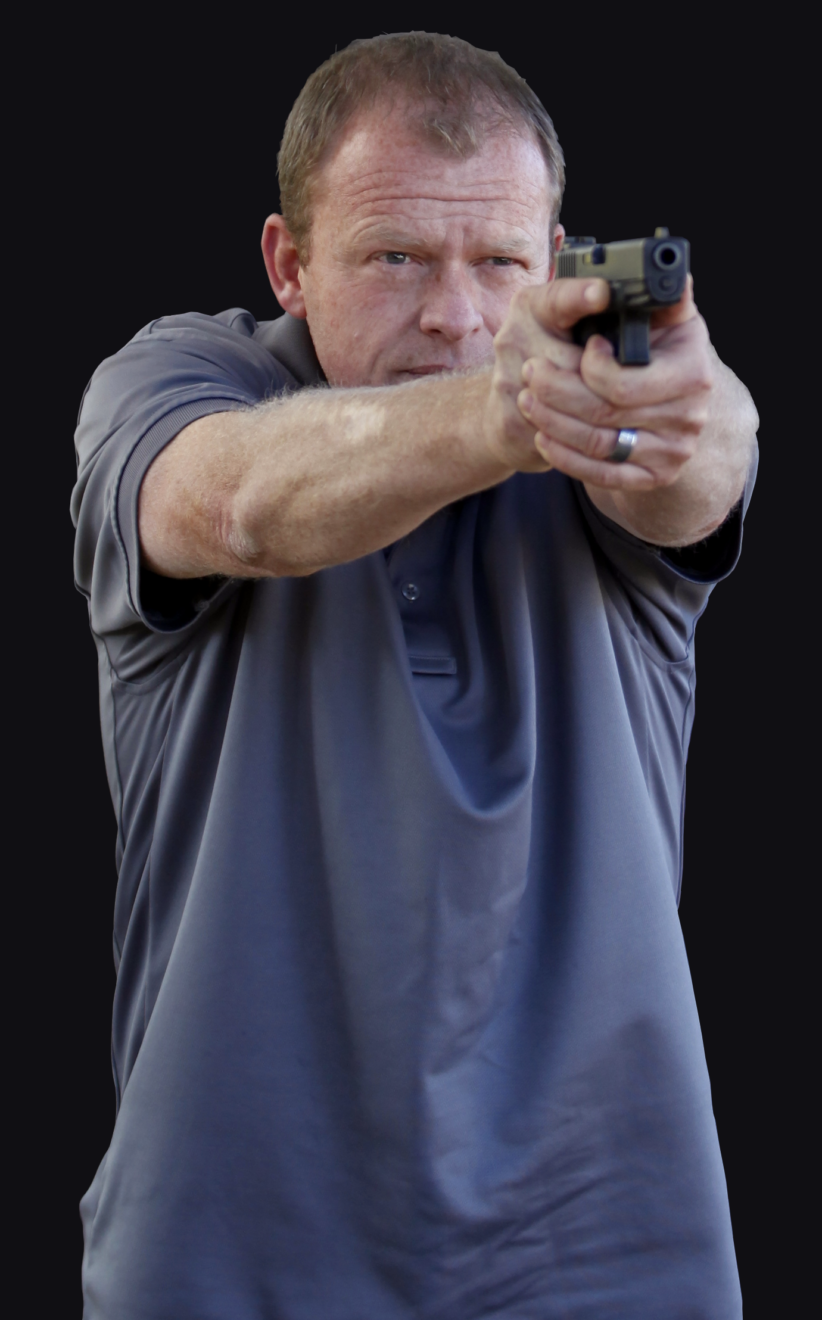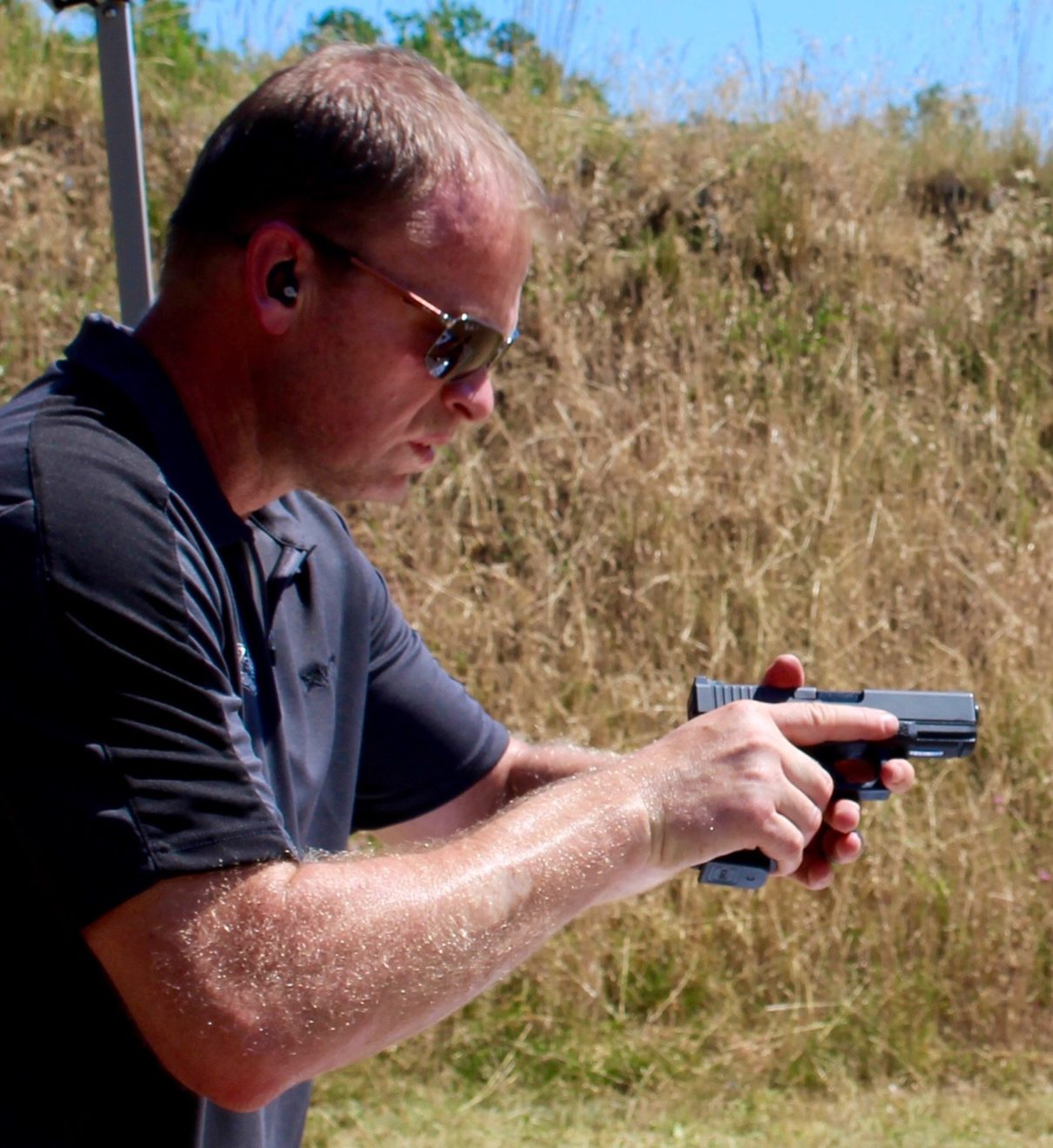Spotting Danger Before It Spots You: A Top Situational Awareness Manual
So often we think that purchasing a handgun or other firearm and learning how to shoot it is all we need to protect and defend ourselves and our families. But according to situational awareness expert Gary Quesenberry, an important and sometimes overlooked strategy of heightened awareness is just as important. Perhaps it’s more so.
“The bottom line is you can never fight what you can’t see,” says Quesenberry in his new book, Spotting Danger Before It Spots You, published by YMAA Publication Center. Subtitled Build Situational Awareness To Stay Safe, the book it explains a number of techniques that will help you to develop skills to spot and then circumvent dangerous situations.
Who Is Gary Quesenberry?
Quesenberry has an impressive background. He is a United States Army veteran, having served in the 7th Infantry Division as an Artilleryman and the 24th Infantry Division during Operation Desert Storm. He worked for the Federal Bureau of Prisons as both a corrections officer and a member of their Special Operations Response Team (SORT).
After the events of September 11th, 2001, Gary joined the Department of Homeland Security and became a Federal Air Marshal. He has traveled the world in the service of his country and devoted his time to studying the areas of violence and predatory behavior. He has an extensive background in domestic and foreign counter-terror training. He’s developed numerous basic and advanced level training courses focused on mental toughness, marksmanship, and defensive tactics. He has worked in both the private and corporate sectors to help educate others on the importance of situational awareness and personal safety.
You may know him as a competitive shooter. He was featured on the History Channel’s hit television series Top Shot – Season 3 and Top Shot All-Stars. Quesenberry is also the CEO of Q-Series LLC, known for the minimalist concealed carry handgun holsters that Quesenberry designed himself. I’ve used those holsters and they’re excellent.
So, What Is Situational Awareness?
As Quesenberry describes it, situational awareness entails continually being mindful of your surroundings and being able to interpret what you observe to accurately predict the actions of others. It’s not living in a paranoid state of hyper-vigilance, but a practiced set of observation techniques that eventually become part of your everyday routine.
Are You An Easy Target?
Early on, Quesenberry puts you inside the mind of a predator.
In selecting a potential victim, a predator can quickly size you up by his initial perception of you, the risk involved in attacking you, what observable value you might present (what he might gain) and any visible defenses you might employ.
You have to eliminate the “it-can’t-happen-to-me” way of thinking.
Once you know how a predator evaluates his victims, you have to conduct an honest personal assessment to see whether you would present a hard or soft target to such an attacker.
Such a self-analysis has to be an on-going practice.
Such simple things as your body language and level of distraction can determine your vulnerability.
Walking head up and aware, moving with purpose and confidence can go a long way in making a predator look elsewhere.
Play The Games To Develop Your Skills
Quesenberry provides some exercises you can use alone or with family members to help you develop better observation skills There’s the What-If game that can be played wherever you go. What if a gunman entered the restaurant? What if someone opens fire at the football game?
In visualizing these scenarios, you can plan for different contingencies. Where are the exits? Is there any available cover? Is there any obstacle I can put in the attacker’s path? Is there anything I can use as an improvised weapon?
In any critical situation, the strategies can include avoidance, escape, de-escalation and actual conflict. Obviously, avoiding a bad situation altogether is the preferred way to go and that’s how situational awareness can help.
Another exercise to develop your powers of observation is KIM – Keep In Memory. Basically, you observe as much as you can briefly – people in a room, items on a table for instance – and later try to recall as much detail as possible.
Straying From The Baseline
Quesenberry says that you’ll eventually be able to key in on behaviors that stray from a normal baseline whether you’re at work, at an event or walking down the street.
Sometimes recognition that something’s not right is not the result of a conscious thought process, but an intuitive, gut feeling. You need to heed those gut feelings.
When someone stands out as a possible threat based on actions and not preconceived ideas of what a bad guy looks like, pay special attention to the hands because that’s where the danger will come from.
Prepare To Take Action
Spotting trouble is one thing, dealing with it is another. Quesenberry provides insight into developing a no-quit mindset and provides ways to reduce distractions, control your fear and handle stress so that you don’t freeze in a critical situation.
A Worthy Book For Your Overall Readiness
Spotting Danger Before It Spots You is a very worthwhile investment in your time and money. I plan on buying several copies to give to other members of my family.
As Quesenberry says, “In most cases, violence is predictable and avoidable if you know what to look for.” Spotting Danger Before It Spots You gives you the tools and techniques you need so that you can anticipate trouble coming and take the appropriate actions to survive.
The book is available at most outlets. You can go to garyquesenberry.com for quick links to such book sellers as Barnes & Noble, Books A Million and Amazon.com. You can also follow Quesenberry at facebook.com/quesenberrytraining and instagram.com/q_series.
Steven Paul Barlow is a retired sergeant/station commander and former firearms instructor with the New York State Police. He is an avid hunter, fisherman, and enthusiast with all things related to firearms, knives, and survival. He has been writing on outdoor topics for more than 35 years. His collections of outdoor humor stories are available at BriarHill Books.





